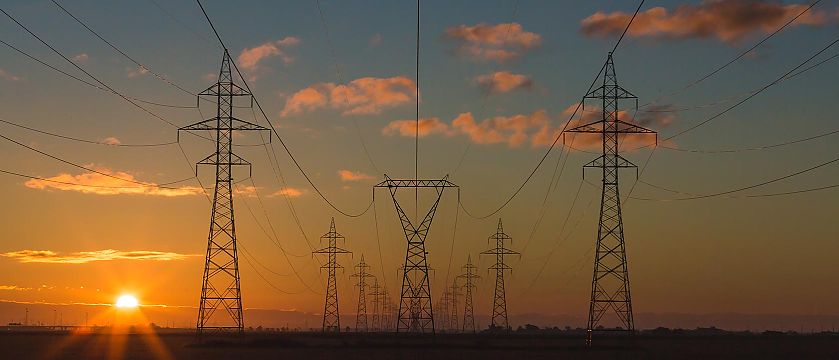Glossary
Employer Brand
Employer Brand
Employer Brand

People often talk about the "employer brand". This term does not essentially refer to a brand, but to the role that the corporate brand should play in this area: supporting the HR department in recruitment, personnel management and communication.
This means that the corporate brand forms the basis of employer branding. There should not be a separate "employer brand" that exists independently and in parallel to the corporate brand. Such a two-pronged approach will not be successful.
Find out here what employer branding means.
Our recommendation:
Study: Employer Branding: Using the brand to discover the right talent
Article: Without a strong employer brand, companies have no future
Employer Branding
Employer Branding
Employer Branding

Employer branding encompasses all strategic measures intended to build, implement, and manage the employer brand.
The goal is to position the company as a credible, attractive, and unique employer by means of development and communication of a brand-strategic No.1 position – internally as well as externally. A successful brand attracts the right "potentials" and retains them, increases motivation, strengthens the company culture, and generates a strong image of the employer in the minds of those targeted by the communication. In the medium term, the business result and brand value are increased.
All this is based on the employer brand strategy, which is applied within the strategic framework of the corporate brand. Employer branding is therefore a crucial management tool for personnel marketing, significantly influencing and driving the entire (brand-centered) corporate strategy.
Work-Life balance, career opportunities, or training options are often declared employer branding measures, even though they do not offer and differentiation from other employers. The BrandTrust Employer Branding Study has revealed that 53 % of employees today base their decision for an employer on whether the company's values match their own personal values.
It follows, then, that the crucial component for employees is individual, emotional identification with the corporate values. Krones, for instance – a mid-sized manufacturer of bottling and packaging technology – offers a multiple choice test on its Facebook page that lets potential employees find out if they are 'Kronese' and share the company's values.
Our recommendation:
Study: Employer Branding: Using the brand to discover the right talent
Article: Without a strong employer brand, companies have no future
Energy brands
Energy brands
Energy brands

The energy market is highly saturated and the lion's share of participants tries to differentiate by means of pricing. The potential of the brand is not tapped.
What is different about energy brands?
Brands did not become significant for energy companies until 1996 – as a result of market liberalization within the EU. That goes for both B2B brands and B2C brands.
The objective of the liberalization was: To establish a domestic market, destroy monopolistic structures and stimulate competition among energy providers – for the benefit of consumers. A host of new providers emerged. Since 2011, numerous providers of renewable energy have joined the mix, because Germany turned away from nuclear energy in the wake of the reactor disaster in Fukushima. In 2017, Germany had roughly 1,190 energy providers.
For consumers, this high degree of market saturation means: They have to try to get their bearings in a huge and very confusing flood of offers. They are exposed to enormous information overload.
Today's energy market is defined by price wars
Counter to the original goal of liberalization, some energy providers merged to form oligopolistic mega-corporations. In 2010, the market share of the four largest providers RWE, EnBW, E.ON and Vattenfall was nearly 45 %. The result was a merciless price war that continues to this day.
For consumers, price now seems to be the key criterion: Between 2012 and 2014, about half of the German population switched providers using energy comparison portals.
What could the management of energy brands look like?
In a highly saturated market like the energy market, providers can still escape the prevailing price wars: with a strong brand. Such successful brands have a specific personality, which has emerged from previously delivered peak performances. In brand management this is called the brand core.
Energy brands can emphasize their uniqueness with brand core values. They differentiate from the competition, increase their credibility and attractiveness. Consumers appreciate them because they offer orientation within overabundance.
Strong energy brands thus enjoy consumers' trust – and can escape the pricing spiral that way.
Further information:
Establishing a brand
Establishing a brand
Establishing a brand

Once a brand is established, it is etched into the consumer's psyche in a monopoly position (see Hans Domizlaff: „Die Gewinnung des öffentlichen Vertrauens" (Gaining the public trust)).
Target groups are familiar with the brand. It usually dominates a particular market segment or is one of the key players in that segment.
An established brand is associated with fixed values. These have generally settled into value clusters through consistently delivered peak performances, and the customer has learned them.
Event brand
Event brand
Event brand

An event brand is an event that takes place regularly and is perceived by people as attractive or even desirable. It therefore has a strong appeal.
How does an event become a brand?
This is how you can recognize a strong event brand: it offers unique, specific experiences. That's why it is widely known beyond its core target group and fan community. Its distinct specificity clearly sets it apart from its competitors.
These are the success drivers for event brands:
- Clear timing: if an event always takes place according to the same laws - every year, at the same time, in the same place - it creates a highly efficient and long-lasting attractiveness. Nevertheless, the effect of this kind of timing is usually underestimated.
- Concentration on a core theme: If an event wants to become a brand, it needs a strict, unmistakable focus. The temptation to use the presence of many participants for other things is great. However, a broad focus would stand in the way of the requirement that an event brand must be unmistakable. Event brands therefore need boundaries, just like other brands.
- Emotional added value for visitors: Large brand events create a sense of community and belonging. They socialize their theme far beyond the narrow fan community.
There are these types of event brands
- Location: Event brands are often inextricably linked to a venue.
Example: the Glastonbury Festival - Time: Some are linked to a specific time.
Example: the New Year's Concert of the Vienna Philharmonic - Tradition: Others focus on strong themes - often with historical origins - and bring them to life in a unique way
Examples: La Biennale di Venezia, Bayreuther Festspiele - Needs and desires: Other attractive event brands fulfill life needs.
Example of the need for knowledge: SXSW Conference
Example of the desire for freedom: Burning Man
Example of the need for belonging: New York Fashion Week
Destination brands benefit from event brands
Strong event brands can have a considerable influence on the success of destination and regional brands, as they make their values directly tangible. They contribute to their brand core.
- Example Brazil and Rio: Rio de Janeiro Carnival, it shows samba and joie de vivre
- Example New Orleans and Louisiana: Mardi Gras in New Orleans embodies jazz and diversity
- Example Kitzbühel: Hahnenkamm race, emphasizes the sport and lifestyle of the place.
Do you have any questions or suggestions about the glossary or would you like further information? We look forward to receiving your e-mail.
Get in touch with us
Would you like to arrange a non-binding telephone call with us or do you have questions about our offer? Then simply fill out this form and we will get in touch with you as soon as possible.
